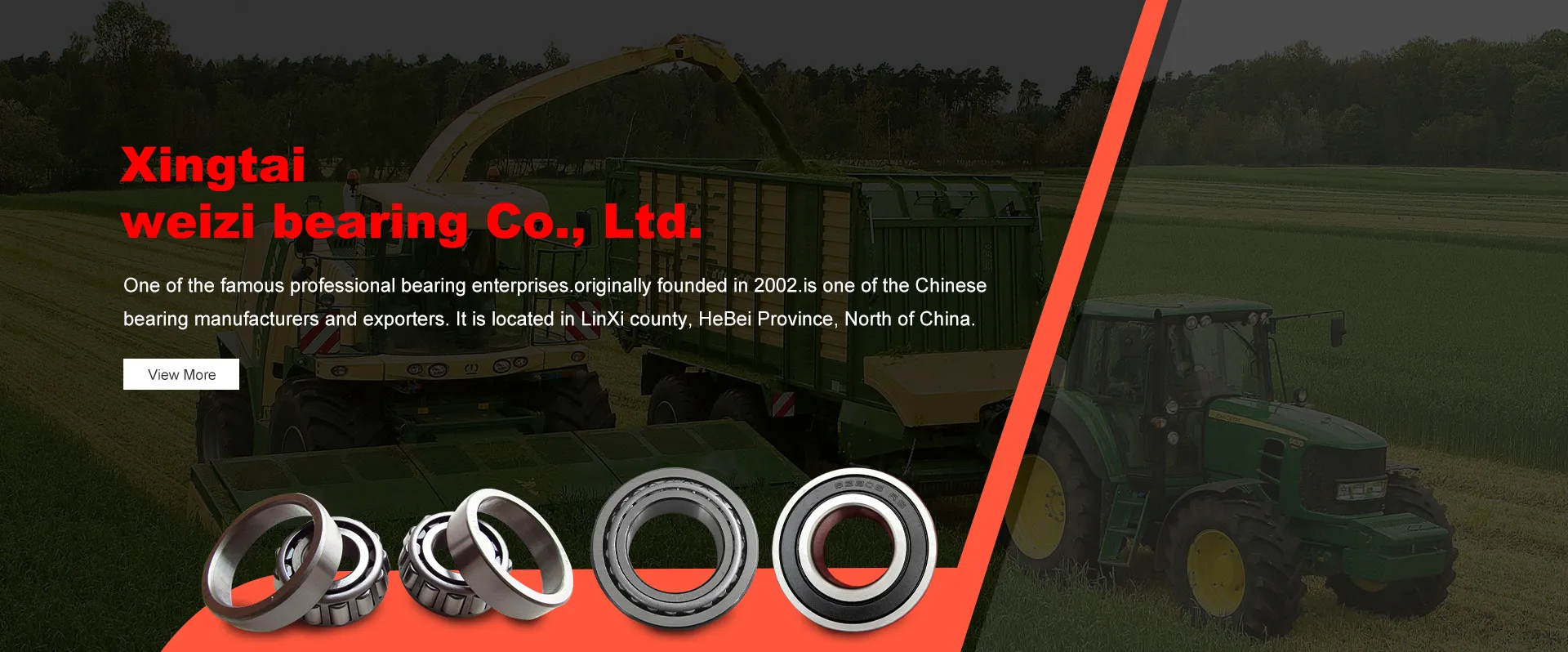
Jul . 29, 2024 16:08 Back to list
Comprehensive Guide to Understanding Cylindrical Roller Bearing Specifications and Their Applications
Understanding Cylindrical Roller Bearing Specifications
Cylindrical roller bearings are a type of rolling element bearing designed to support high radial loads and moderate axial loads in applications where space is limited. Their unique design, featuring cylindrical rolling elements, allows for a larger contact area between the rollers and the raceways, promoting enhanced load distribution and reduced stress concentrations. This article delves into the specifications, benefits, and considerations when working with cylindrical roller bearings.
Specifications of Cylindrical Roller Bearings
The specifications of cylindrical roller bearings are crucial for ensuring their appropriate application in machinery and equipment. Key specifications include
1. Dimensions The bore diameter, outer diameter, and width of the bearings are critical for fitting them into a machine. These measurements are typically given in millimeters and adhere to standardized dimensions set by organizations such as ISO or ANSI.
2. Load Ratings The dynamic and static load ratings provide essential information about the bearing's capability to withstand loads. Dynamic load rating (C) indicates the maximum load that can be applied under standard conditions without causing fatigue failure, while static load rating (C0) denotes the maximum load that can be applied without permanent deformation.
3. Type Cylindrical roller bearings come in several designs, such as single row, double row, and multi-row configurations. The design impacts the bearing's load-bearing capacity and its suitability for specific applications.
4. Materials Bearing materials affect performance, durability, and strength. Common materials for cylindrical roller bearings include high-carbon chromium steel, stainless steel, and sometimes ceramic. Each material has its own advantages, such as resistance to corrosion or improved fatigue life.
5. Internal Clearance This specification defines the amount of space between the rolling elements and the raceway, affecting how the bearing operates under load. Proper clearance adjusts for thermal expansion and ensures optimal performance.
6. Operating Temperature Cylindrical roller bearings have defined temperature ranges that govern their performance. Operating outside these specified temperatures can lead to premature failure or reduced efficiency.
Benefits of Cylindrical Roller Bearings
cylindrical roller bearing specifications

Cylindrical roller bearings offer several advantages
- High Load Capacity Their design allows for a larger contact area, enabling engagement with high radial loads compared to other types of bearings. - Low Friction The cylindrical shape of the rollers reduces rolling resistance, leading to efficient operation and lower energy consumption.
- Versatility With various designs and materials, these bearings can be tailored for a wide range of applications, from automotive to aerospace.
- Enhanced Durability The distribution of load across a larger surface area can prolong the lifespan of the bearing, making it a preferred choice for heavy machinery.
Considerations When Choosing Bearings
When selecting cylindrical roller bearings, consider the following
- Application Requirements Analyze the specific needs of the application, including load types, speeds, and environmental conditions.
- Mounting and Installation Ensure a precise fit for optimal performance. Misalignment can lead to premature failure.
- Maintenance and Lubrication Proper maintenance and choice of lubrication system (oil or grease) can significantly affect bearing longevity and effectiveness.
Conclusion
Cylindrical roller bearings are critical components in various mechanical applications, designed for high load capacity and efficiency. Understanding their specifications, advantages, and maintenance needs is essential for ensuring their reliability and performance in different operating conditions. Proper selection and care can lead to enhanced productivity and reduced downtime, making them a valuable asset in any engineering or manufacturing setting.
Latest news
-
Industrial Machine Bearings: the core hub of mechanical operation
NewsAug.06,2025
-
Deep Groove Ball Bearing: A Dynamic "Elf" Operating Mechanically
NewsAug.06,2025
-
Compact craftsmanship: the way to optimize the space of Concrete Mixer Bearings
NewsAug.06,2025
-
Combine Harvester Bearings: The 'Steel Backbone' of Modern Agriculture
NewsAug.06,2025
-
Bearing Machinery: a flexible support hub for mechanical operation
NewsAug.06,2025
-
Agricultural Equipment Bearings: A Power Hub for Intensive Cultivation under Radial Space Constraints
NewsAug.06,2025
